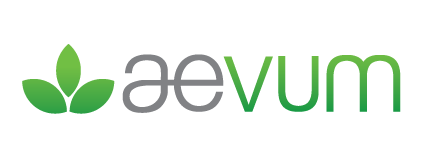Physio for a back or neck injury
I’ve worked in the Sutherland Shire for all of my career as a Physio. Very early on I started in Caringbah and Engadine before commencing at a small clinic in Jannali, then we first opened Aevum Health in Helensburgh and Kirrawee. Working in all of these clinics there was one consistent standout injury presentation, back and neck pain.
Back and neck pain is the most common presentation to any Physio clinic in Sydney. There are two main reasons for this, one is that naturally, it’s an area of high load and functional importance during our day-to-day lives. The other is simply because of the density of anatomical structures to injure! There are so many muscles, tendons, nerves, ligaments and joints etc all in a relatively small area. Therefore statistically speaking it’s the highest probability of injury.
I’ll bet everyone reading this will be able to relate with either neck or back pain at some point. There are over 230,000 people living in the Sutherland Shire, that’s a lot of neck’s and back’s to injure.
What Does Physio Do For Back & Neck Pain
Ok, so Physiotherapy for all these back and neck pain sufferers in the Sutherland Shire, what’s it all about?
Your initial consultation involves taking a thorough history of the injury, how it happened, when it happened… followed by a physical examination where we test all of the anatomical structure and provisional diagnosis that fit your history presentation. If needed your Physio can directly refer you for an x-ray or an MRI. This will allow us to formulate a plan with the correct diagnosis, and as I mentioned before there are so many anatomical structures and an endless way to injure them, so the plan needs to be specific to you.
Countless times I’ve been at a function or event talking to someone, and every Physio will be able to relate to this, and when someone asks what you do, and you mention that you are a Physio, you instinctively know that someone is going to ask… Oh, I’ve injured my back recently, what exercises do I need to do to fix it? This of course isn't helped by the endless youtube video’s titled “How to fix your back pain” implying there is a specific exercise or series of exercises that fix all back injuries. Unfortunately, it’s way more complicated than that.
I don’t mind explaining the nuance of this however to be honest if I’m a little tired and irritable my answer is “Just go swimming” this normally appeases the inquisitor, but is of course a pat answer, however, with a reasonable amount of research to support it funnily enough. Please forgive me if you have received that answer from me at a function haha.
Examples of Lower Back Pain
To make a point, here is a short list of injuries your Physiotherapist can diagnose and help with. I'll even try and keep it somewhat efficacious by limiting the list to lower back pain only.
Mild disc injuries
Herniated discs
Annular tears (part of the disc structure, small injury, very painful)
Facet over compression injuries
Facet joint arthritis
Sciatica
Nerve root compression
Posture related pain/injury
Sacroiliac joint injuries (SIJ)
Pelvic dysfunctions (multiple to choose from here)
Lower back ligament tears
Lower back osteoarthritis (Spondylosis)
Interspinous ligament tears
Intertransverse ligament tears
Ligamentum flavum tears
Anterior longitudinal ligament tears
Iliolumbar ligament tears
Quadratus lumborum tears
Rotatorbrevis muscle tears
Rotator longus muscle tears
Interspinales muscles tears
Multifidus muscle tears (small little guy, but very important)
Spinalis muscle tears
Spinal compression fractures
Stress fractures
Endplate stress fractures
Pars defect (another form of fracture)
Spondylolisthesis (Slipped spinal segment)
Retrolisthesis (Slipped spinal segment, just in reverse)
Ankylosing spondylitis
Arachnoiditis
Paget’s disease
Osteoporosis
And this doesn't even take into account the varied degrees of injury to these tissue structures, or all of the functional injuries that aren't from something broken/torn but just from simply not functioning properly and this list is also in no way an exhaustive list! Oh my goodness, that was both exhausting and satisfying.
But I think the point stands.
Back & Neck Pain Diagnosis
It’s very complicated but needs to start with a correct diagnosis and a very specific plan for “your” back pain and “your” back or neck injury, as each of these diagnoses needs to be managed very uniquely.
I also want to mention that when fixing an injury or helping someone recover from pain, fixing the injury is only 50% of the battle, the other part is trying to ascertain why it originally happened and if there is anything we can do to prevent this in the future i.e. a graded strengthening program. This will help to ensure that the injury is fixed, but your confidence in your back or neck is also restored.
Contact the experts at Aevum Health today to see how we can help you with your back or neck pain.
